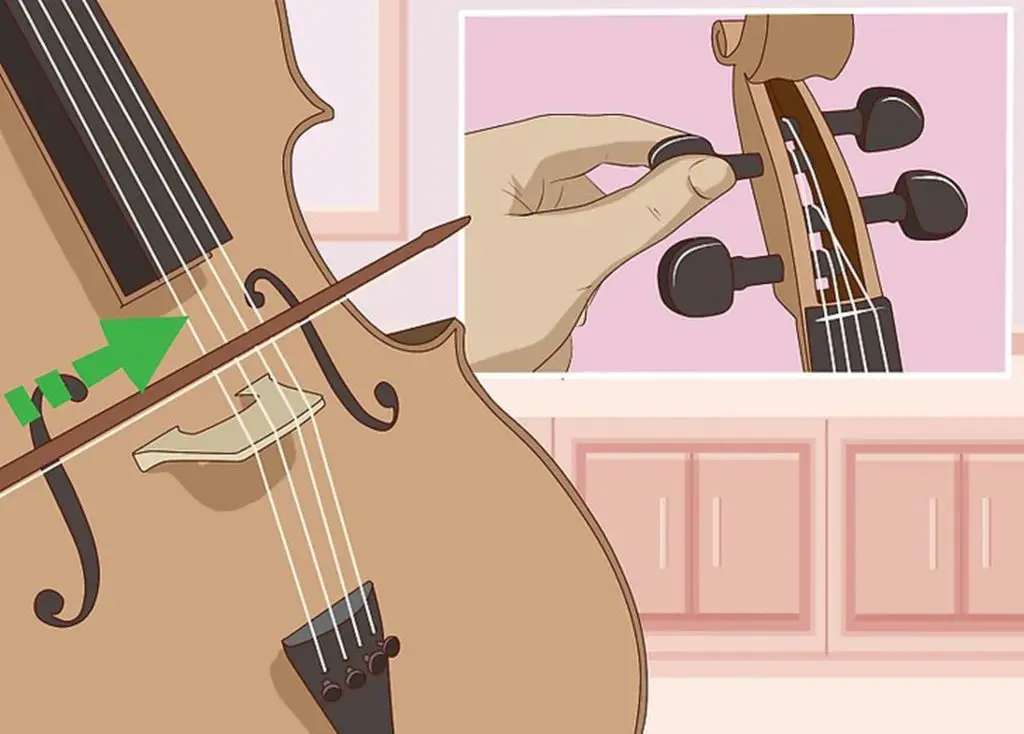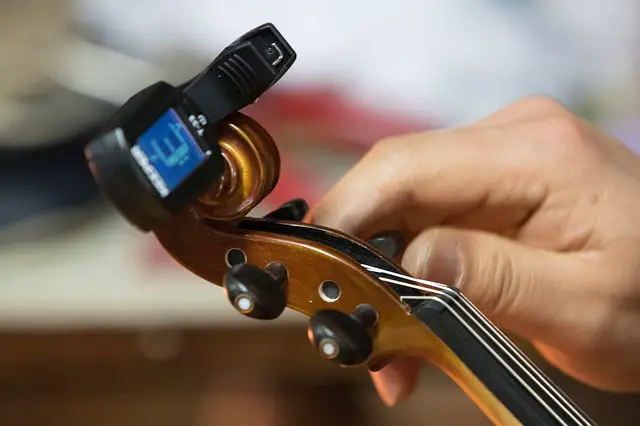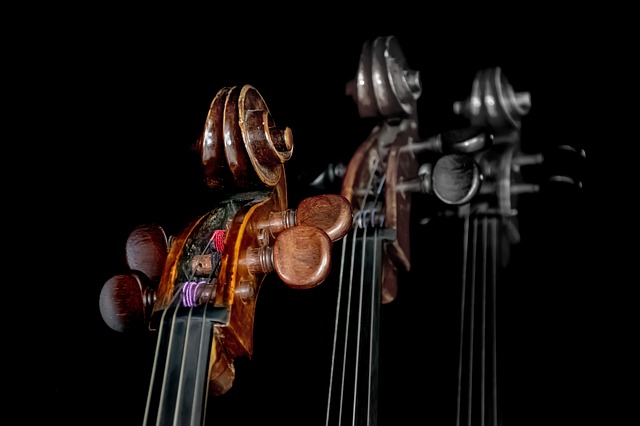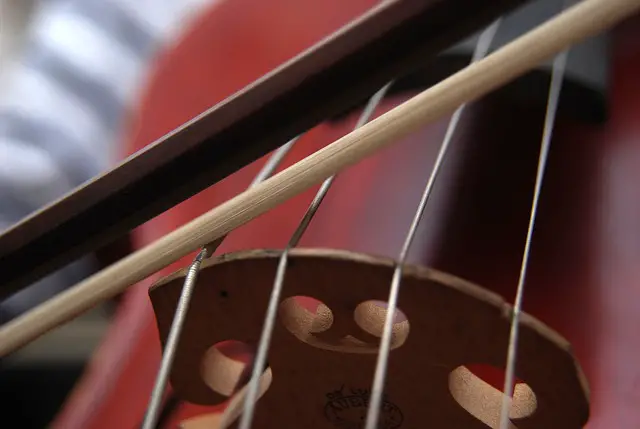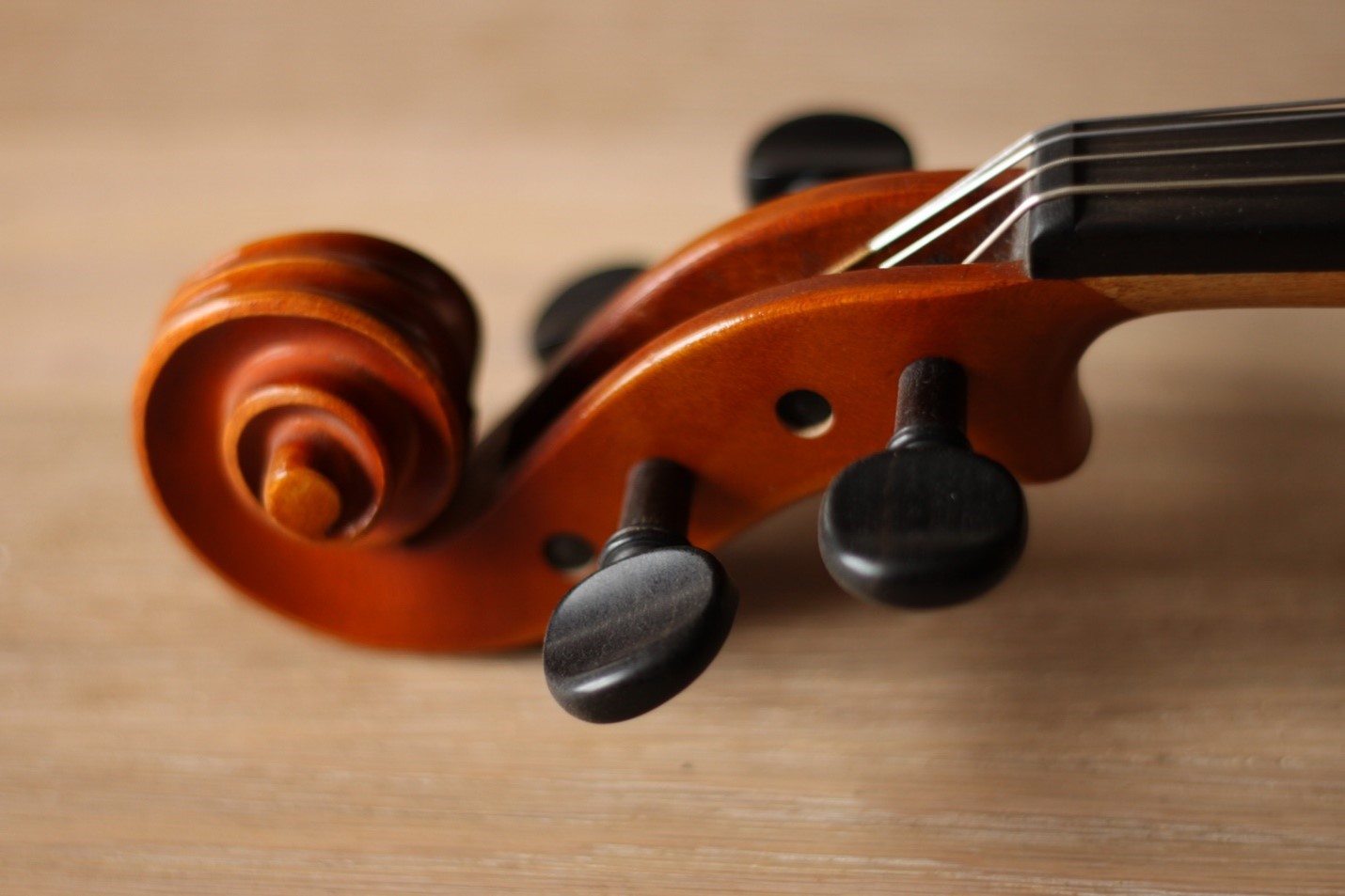
Cello Tuning for the Absolute Beginner
While learning how to play any string instrument, understanding how to tune it is an important first step that should be prioritized in the beginning – and the same goes for cello tuning. Your instructor will at first ensure that instruments are properly tuned, but beginning musicians must discover how to tune their instruments independently as soon as possible.
To be able to tune your cello — and the process is difficult — newbies will need the proper equipment and knowledge.
Don’t restrict your talent and ability just by depending on your instructor, because being able to tune your cello independently will help you to practice on your own schedule and progress more quickly. Continue reading to learn everything you need to know about cello tuning.
Contents
Cello Tuning Instructions
The cello is made up of four strings that are tuned in perfect fifths. The notes are C, G, D, and A, and they move up in pitch order, with C being the lowest and A being the highest.
Cellos are tuned by rotating the pegs around which the strings are wrapped. A musician increases the pitch by tightening the strings and lowers the pitch by loosening the strings.
The four tuning pegs are positioned on the pegbox, and the four fine tuners at the tailpiece (if fitted) can be used to tighten and loosen the respective strings. Keep in mind that the tension of the strings over the bridge helps secure the bridge and keeps the soundpost erect. As a result, be cautious when releasing this tension by slackening the strings in one go.
There are numerous devices that can be used to help tune your cello for beginners who are still working toward full competence in spot-on intonation.
What Do Cello Tuning Sequences Mean?
You can modify your approach depending on how many strings have to be tuned. Small modifications can be made with just the fine tuners, but if the strings have become significantly out of tune, you’ll have to use the pegs.
If you need to fasten more than two strings, use the following tuning sequence: C, G, D, A.
Start with the open C string and slowly tighten it until it reaches the correct pitch.
Begin by pulling the string to produce a tone, then gently turning and applying inward force to tighten it.
A digital tuner can help with this process by allowing you to see how the note changes as you turn. These tuners show whether you are flat, sharp, or on the pitch.
Don’t be discouraged if you aren’t on the pitch right away because each string is influenced by the tuning of another, so there will be several adjustments.
Do the same thing with each string.
After all of the strings are as close to pitch as possible, check your bridge alignment to ensure that the forward pressure hasn’t caused it to lean. It should form a 90º angle with the belly.
To reach the final changes, fine tune each string with the fine tuners.
Cello Tuning Tools You Must Have
Tuners
Tuners are important cello gadgets for beginners because they keep you in tune at all times.
Unique designs like the Korg Humidi-Beat not only function as a metronome but also measure the humidity and temperature inside the cello case. This can have an effect on the tuning.
Choosing the proper digital tuner is a much easier way for beginners to begin developing their audio skills and responses to the cello.
The Korg CA40 chromatic tuner has an elegant design with a back stand that allows you to place the tuner on any ground. It is a larger and easier-to-read version of previous high-precision LCD needle style meters. Its Sound Out function offers a useful tone from the internal speaker, and the tuner remembers the pitch you choose for future use — up to 85 hours of continuous use if desired.
The clip-on model of digital tuner has its own benefits. Tuners, such as the Intelli IMT500 clip-on chromatic tuner, can detect strong vibrations and provide high accuracy tuning in loud environments. This tuning style is very user-friendly, with clear visual support. Beginners will be able to connect sound and sight, which will aid in the development of their ear training.
A pitch pipe can be a good option for beginners who are new to cello because it trains the ear for comparison tuning. Pitch pipes provide each needed note by blowing into the device.
Most advanced Cellists frequently use a simple tuning fork to produce an accurate A note, after which the other strings are tuned by ear. This is not suitable for beginners.
Tune your cello again with a piano (assuming the piano is on the pitch! ), working up from C to G, D, and A. Finally, finish the job with the fine tuners.
Read More: Yamaha Electric Cello Range Explained (SVC110, SVC220 and SVC-50)
Tuning Pegs Care and Upkeep
Trying to maintain smooth-turning tuning pegs is important in making the most out of your experience as a player.
Student instruments can be irritating because they are too tight or have slippery pegs. Confirm that the supplier properly fitted the pegs—many offer a free service after a year to check this function.
A cello accessory like The Pegmate can make tuning your cello even easier, resulting in smoother turning and tuning. Simply loosen each peg in turn and apply a thin layer to the surface if necessary. Adjust the tension and keep moving on to the next peg. Get the Cello shop to do it for you if you’re not too far ahead.
Broken Strings
Overtightening the strings accidentally can cause them to break, normally at the pegbox end. Strings do not break due to poor manufacturing, so the only solution is to purchase a new one and consider replacing the string.
Our article with a selection of cello strings will have you playing again in no time. Remember to include the string type (if you have upgraded strings) as well as the cello’s size (34, 12, etc.).
More Cello Tuning Advice
- Never remove or loosen (because of whatever reason) all of your cello’s strings at once; instead, remove just one string at a time. This is due to the fact that if the string tension on the instrument is insufficient, the bridge and soundpost can collapse. If this happens, you will need to have it fixed by an expert. A costly occurrence is easily avoidable.
- At elevated temperature, the strings frequently become flat. Lower temperatures can cause the strings to go sharp; bear that in mind when tuning.
Lower temperatures can cause the strings to go sharp; bear that in mind when tuning. - Fine-tune your cello on a regular basis.
- Experiment with various tuners to determine which one is best for you.
- Never tighten fine tuners completely—some designs can dent or scratch the belly. If this is the case, unscrew the fine tuners completely, tune with the pegs, and then re-tension the adjuster.
- Using a string cleaner, you can keep your strings tidy and smooth. Rosin that has been impacted can cause tone loss over time.
We understand the importance of assisting people at every stage of their instrumental and musical journey. That’s why we’re so committed to providing beginners with whatever they need to succeed with their cello and make it a part of their lives for the rest of their lives.
By merging your cello with quality tuning materials, you can give your student, child, or even yourself the best chance of success on the cello. Ensure that your instrument sounds exactly as it should every time it is bowed with perfect intonation.
Find an experienced person who can guide you through the learning experience and beyond to give yourself an even better chance of succeeding.
Cello tuning FAQs
Is it difficult to tune a cello?
While it can be difficult at first, learning this basic skill is fairly simple for most students when using a chromatic (or digital) tuner. However, tuning the cello takes a little more finesse, and the sequencing you use is crucial.
What exactly is a cello peg?
A cello peg is just what holds the strings in the instrument’s peg box. As you flip and press the pegs into the holes in the peg box, they become “stuck,” keeping your cello’s strings in tune.
What is the ideal tension for cello strings?
Tighten your bow until there’s about a pinky finger’s distance between the center of the stick and the hair when playing the cello. Approximately a centimeter and a half.
- Viola vs Violin – 5 Key Differences Between The Two Instruments - March 20, 2024
- 15 of the Most Famous Violinists of All Time (18th Century to Present) - March 20, 2024
- Full School Band Instruments List (Elementary / Middle / High) - March 18, 2024

